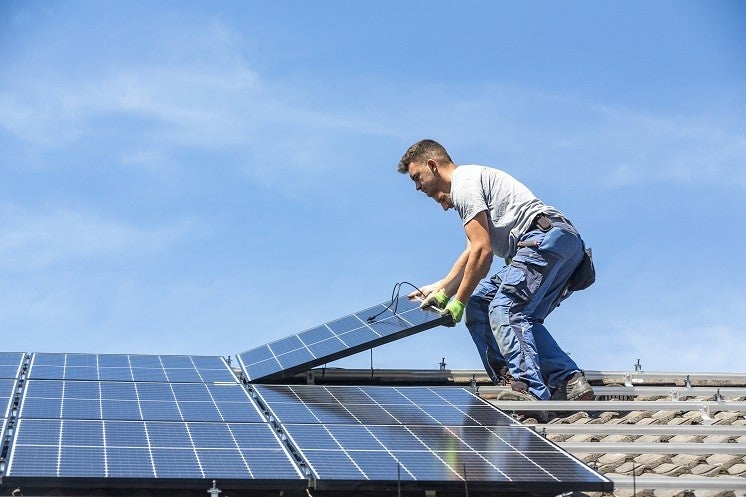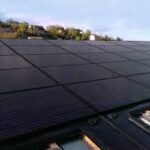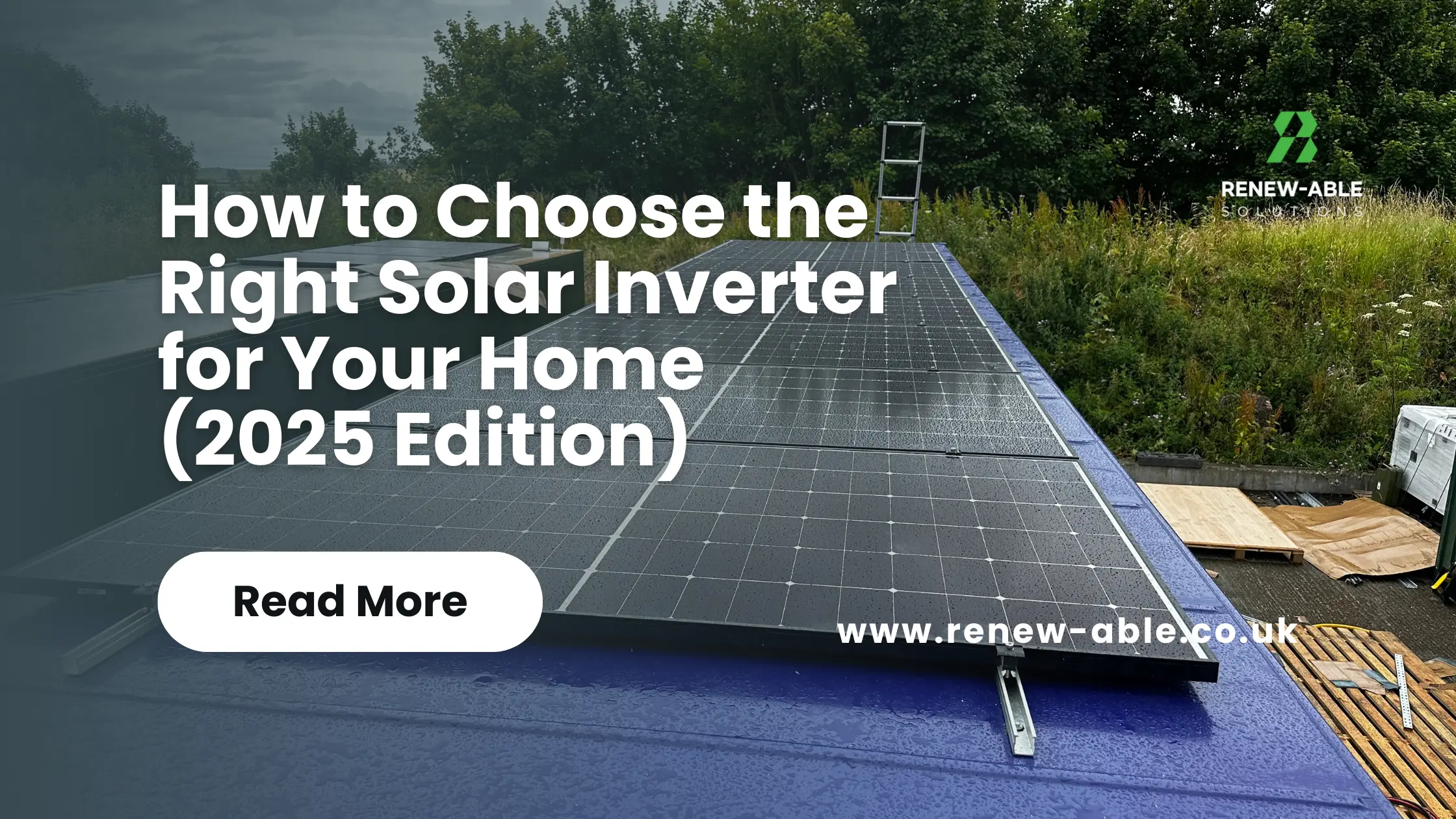✔ A solar panel’s power output is measured in kilowatts (kW)
✔ A three-bedroom house will typically need a 3.5 kilowatts peak (kWp) system
✔ Complete the form above to receive free solar panel quotes from local suppliers
Investing in solar panels can be daunting if you’re not familiar with the lingo – there are a plethora of solar-specific definitions, energy is measured in all sorts of ways, and don’t get us started on the robotic, consonant-packed panel names.
Solar panel output can also come under this bracket of daunting jargon, but we’re here to make it easier for you.
We’ve compiled all the need-to-know things when it comes to making sure you have the right amount of power flowing out of your panels.
If you’re already familiar with all things solar, why not dive in and get yourself a quote for a new solar panel system?
Once you’ve filled in a few details, our suppliers will be in touch with quotes for you to compare. You’ll find the right deal in no time.

What’s on this page?
01 | Solar panel power output
02 | How much energy does a solar panel produce?
03 | What factors affect a solar panel’s energy production?
04 | How to work out your own solar panel’s energy production
Solar panel power output
Let’s start off with the basics – a solar panel’s output is expressed in watts. On average, a domestic solar panel has a power output of around 265 watts, although it can range anywhere from as little as 225 watts to more than 350 watts.
The higher the wattage of a solar panel, the more electricity it can produce under the same conditions – but these conditions will depend on where you live, your roof’s angle, and the compass direction your home faces.
A south-facing house in south England with a 40° roof will be best positioned to generate the most solar energy, with a 300-watt panel on this home producing 363 kWh per year, according to European Commission data and our calculations.
However, a more typical UK home – a west-facing roof in Birmingham that’s pitched at 35° – will produce 225 kWh per year with the same panel.
And a house in North Scotland with the same setup will generate 190 kWh per year, the lowest in the UK.
Take a look at the table below to compare the most powerful panels on the market – although you should be aware that high-power panels aren’t necessarily for everyone. There are some excellent all-rounders out there, and our guide on the best solar panels will give you a better idea of which panel is best for you.
| Company | Model | Solar panel power |
|---|---|---|
| SunPower | Maxeon 3 | 400W |
| Solaria | PowerXT Pure Black | 400W |
| LG | NeON® R ACe | 380W |
| SunPower | Maxeon 3 BLK | 375W |
| SunPower | X-Series X22 | 370W |
| Project Solar | EVO Ultramax | 345W |
| Panasonic | HIT® N340 | 340W |
Wondering how to cut your energy bills? Fire up the MakeMyHouseGreen calculator! Provide a few details and it will tell you which green energy products you should buy. From there, you can get free quotes and book a no-obligation consultation call. Get started today!
How much solar energy does your home need?
This all depends on two things: how much electricity you use, and how much of your home you want your solar panels to power.
If your household has a particularly high energy usage, or you want to solely rely on solar panels to power your home, we’d recommend getting solar panels with a high output – around 300 watts (per panel) or more.
However, if you don’t use much electricity day-to-day, or only want solar panels to subsidise some of your home’s energy usage, you can choose solar panels with a lower output – around 225 to 275 watts.
Most homes will install several solar panels, known as a solar panel system. A typical 3-4 bedroom house will require a 3-4kWp solar panel system, typically composed of 12-16 solar panels.
The output of a solar panel system can be calculated by multiplying the wattage of each solar panel by the total number of solar panels. For example, a home in Reading with four 250-watt solar panels would have a 1 kilowatt (kW) solar system (250 x 4).
Most domestic properties have between a 1kW and 4kW solar panel system, depending on how much power they need and the size of their roof. The table below shows you how much electricity different sized solar systems normally generate over a year, as well as how many solar panels they’re typically made up of:
| Solar panel system size | Number of solar panels | Required roof space | Annual electricity output |
|---|---|---|---|
| 1kW | 4 | 8 sq. metres | 850 kWh |
| 2kW | 8 | 14 sq. metres | 1,700 kWh |
| 3kW | 12 | 21 sq. metres | 2,550 kWh |
| 4kW | 16 | 28 sq. metres | 3,400 kWh |
Top tip: to work out how big your solar panel system needs to be, take a look at your latest energy bill. This will show you how much electricity you have used in kWh in the last month (or however often you’re billed).
How much energy does a solar panel produce?
Typically, a 3kW or 4kW solar panel system will produce enough energy for a family-sized home of 3 to 5 people, while a 1kW or 2kW solar panel system will be about the right size for a couple or single occupant.
To give you an idea of just how much electricity solar panels can generate, the table below shows how many hours you can use a selection of household appliances for, based on how much electricity different sized solar panel systems normally produce in a year.
| Solar panel system size | Oven | Fridge-freezer | TV | Dishwasher |
|---|---|---|---|---|
| 1kW | 425 hours | 2,550 hours | 3,400 hours | 850 hours |
| 2kW | 850 hours | 5,100 hours | 6,800 hours | 1,700 hours |
| 3kW | 1,275 hours | 7,650 hours | 10,200 hours | 2,550 hours |
| 4kW | 1,700 hours | 10,200 hours | 13,600 hours | 3,400 hours |
The average 3.5kW south-facing domestic solar PV system will produce about 3,000kWh per year (8.21kWh per day).
What affects how much electricity a solar panel can generate?
If conditions aren’t ideal, your solar panels’ efficiency will take a hit, meaning they won’t be able to work at their maximum power output.
There are several factors that can impact how much electricity a solar panel is able to generate. These include:
Direction and angle of your roof
A solar panel works at its best when installed on a south-facing roof at a 35-degree angle. However, solar panels can still produce a decent amount of power on an east-facing or west-facing roof, and at an angle anywhere between 10 and 60 degrees.
Most houses will fit this description – which is fortunate, since you can’t change the angle of your roof without a lengthy, difficult process that involves a complicated frame system and new planning permission.
You can learn more on our page: What’s The Best Angle and Direction for Solar Panels?
Shade
Make sure your solar panels are installed out of the shade, in direct sunlight. If just a small amount of shade covers a solar panel, it can significantly reduce how much electricity it’s able to generate.
Time of the year
A solar panel will produce more power in the summer months when the days are longer and there are more sunshine hours. If it gets too hot, however, solar panels can overheat; in temperatures over 25°C, they’ll generate less power.
Dirt
If a solar panel is covered in debris, its power output will fall because sunlight will be stopped from hitting the panel. Make sure you regularly clean your solar panels with a hosepipe, as long as the jet of water can reach them.
If your panels are seriously soiled, a professional clean may be worthwhile – and remember: although it rains a lot here in the UK, don’t rely on downpours to wash away the dirt.
How will you know how much electricity your solar panels generate?
 Your solar panels will come with a meter that will be placed in an accessible location within your home. This meter will record the amount of electricity being produced by your solar panels.
Your solar panels will come with a meter that will be placed in an accessible location within your home. This meter will record the amount of electricity being produced by your solar panels.
Some solar brands are also rolling out online monitoring tools, which means you’ll be able to see how much power your solar panels are generating with the click of a button on your computer or phone.
As solar panels require virtually no maintenance, it can be easy to forget about them once they’re installed on your roof. We’d recommend checking them regularly, however, to ensure they’re clean and in good condition.
It’s worth monitoring your meter frequently too, to make sure they’re generating the expected amount of power. If your solar panels’ power output is particularly low, it could be a sign of a problem.








